Grading
and assessing condition
Our grading is designed to give an assessment of the current state of a view and is not a comment on the
ability of the photographer. Processing and deterioration are what we are concerned with.
We
have adopted a ten-point grading system but this is designed to be used
in conjunction with the image on the screen. Where there is doubt we have
slightly downgraded or given two grades. Earlier views will earn a higher
grade than later ones with regard to clarity and sharpness depending on
our assessment of the condition of the original image. For example, some
of the earlier Australian views from the 1860s have somewhat fuzzy images.
That is how they were originally and would not affect our grading.
Mistakes
can be made and the guarantee of satisfaction that you have is that we
will take back views returned within 7 days of receipt and issue a full
refund without question if you are not satisfied. Unless our grading system
is at fault we expect you to pay return postage.
We
have graded as follows:
10.
Pristine, as issued.
9.
Very slight blemish(es) to mount; images pristine.
8.
Moderate scuffing to mount and/or slight marks on image (not damage). Possibly
very slight fading.
7.
Good, average, used condition card. Possibly slight to moderate fading
and/or slight damage to mount or images.
6.
Average to slightly below average. Fading, moderate spotting (foxing),
dirty image(s).
5.
Heavier spotting, staining or fading. No physical damage to images unless
specifically mentioned.
4.
More serious version of 5 and/or serious damage to mount not affecting
images.
3.
Very faded and/or some of the problems mentioned above.
2.
Serious damage to image(s), for example splitting thru image.
1.
Just viewable.
We
would welcome comments on the above.
Other
terms used:
Grubby
- Surface dirt which would possibly remove with care
Milky
- Images not sharply defined, lack of contrast
Glue-creep
- Various adhesives were used to attach the images to the mounts, and these
are under continuing research. All sorts of disgusting parts of animals
(mostly horses and cows) were boiled up and used. Thomas Houseworth in
California obviously had a shortage of such things and used fish glue which
also caused problems. Here is an example of glue-creep:
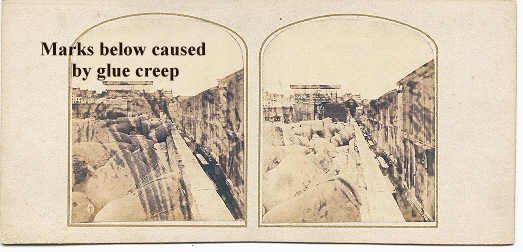
Foxing.
This is a chemical reaction to acids in the paper and is often seen in
old books. It manifests itself as small round rust spots and is most common
on tissue views. It cannot be removed. A foxed view looks thus:
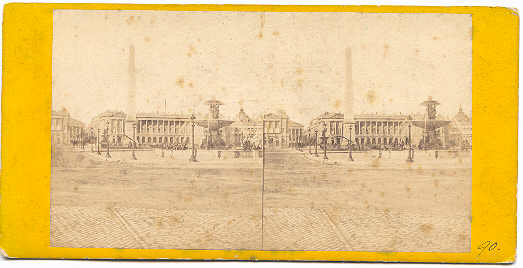
Pirated
view. It has been said that, if a reputable firm in Paris produced a view
in the morning, a cheap pirated view would appear in the afternoon. These
views sometimes cause puzzlement when first encountered when they may be
thought to be early and possibly rare. Compare this pirated view on thin,
poor mount, with the genuine article above:
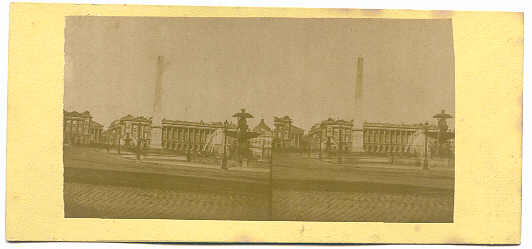
Amateur
view. View taken privately and not for publication. Usually on thick mount
and with no printing. A collecting field in themselves. Here is an example:
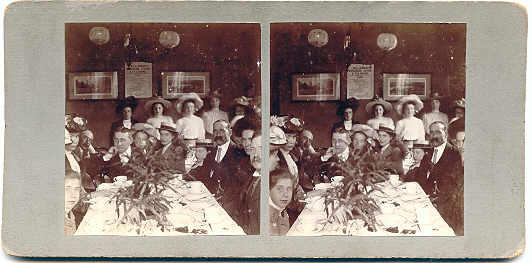
Litho
view. When I mention this term I mean a printed photo-gravure process view
thus:
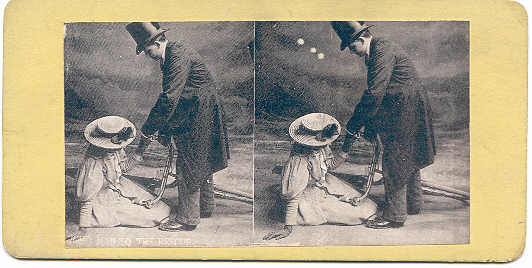
I
have been told the term is only used in the US for 20th century cheaply-printed
views thus:
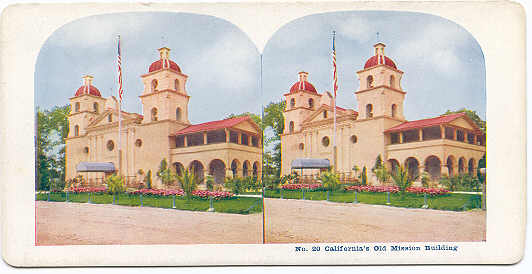
My
'litho' views may, therefore, be a nice surprise when they arrive!





